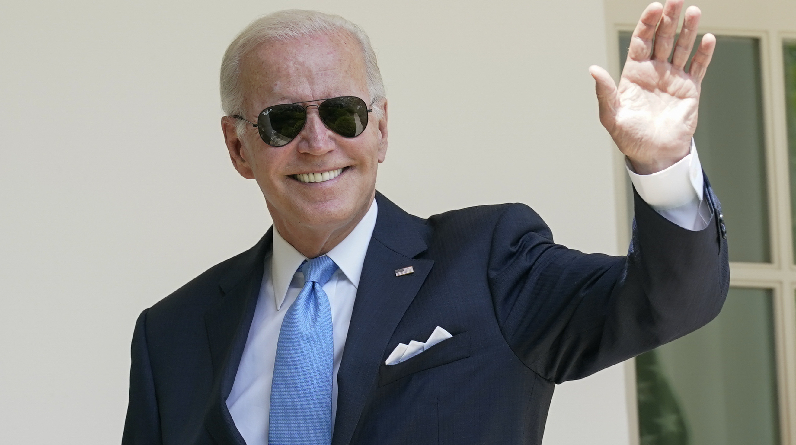Strategies for Reducing Police-Involved Violence
Last month’s shooting death of Tyre Nichols by Memphis police has reignited debate about how to improve the country’s police force. Evidence of police killings and methods to reduce them have been the subject of recent RAND studies. Racist inequities, police education, and repercussions for officers are just some of the areas the authors zeroed in on.
The RAND Corporation released their Better Policing Toolkit in 2018. We hope this guide will be useful in assisting law enforcement in making informed decisions and putting into practise the most efficient methods of policing. The resource is geared towards bettering relations between law enforcement and the general public. According to the head of the project, “this idea is important not only for improving relationships within our communities,” John Hollywood said, “but also for making them safer places to live.”
In addition, our researchers crafted a board game with the express goal of strengthening relationships between law enforcement and the general public. Participants in the exercise include law enforcement officers, community members, and those who provide social services. The groups talk about what they would do in a crisis that could lead to tensions between the police and the community.
Stopping Needless Gun Deaths
More than 40,000 people lose their lives each year to gun violence in the United States. There has been a significant revision to our review of the evidence on the effects of gun laws published by RAND just recently. This study was conducted as part of RAND’s Gun Policy in America initiative, which is working to standardise information in order to strengthen public discourse and encourage the creation of effective gun control laws.
New evidence, including the strongest level of evidence in our study, suggests that laws restricting access to firearms by minors reduce youth homicides and firearm-related suicides. Stand your ground and “shall issue” concealed carry laws are also linked to higher rates of gun violence.
It is recommended that states with gun policies that are not consistent with this evidence consider making changes as a means to decrease gun-related fatalities and injuries.
In addition, RAND researchers have compiled a toolkit detailing strategies proven to lessen the chances of mass shootings and other attacks and lessen their impact when they do occur. The toolkit is based on a review of hundreds of studies and interviews with dozens of experts outside of government.
Russian Aggression Towards Ukraine
Over the course of the past year, RAND experts have offered their opinions on practically every facet of the conflict in Ukraine, from the evolution of the conflict to the ongoing difficulties faced by the Russian military to the factors that could eventually lead to a resolution.
Our most recent findings include the conclusion of a widely-discussed paper written by RAND’s Samuel Charap and Miranda Priebe that avoiding a protracted conflict is the United States’ top priority after reducing the likelihood of escalation. They suggest that the United States government, in order to increase the likelihood of negotiations, should do things like provide more detail about future Western aid to Ukraine, guarantee Ukraine’s security, and provide a path to partial sanctions relief for Russia.
The conflict in Ukraine, it is widely believed, will continue for some time. Nonetheless, Peter Wilson and William Courtney of RAND argue that there are a few alternative paths that could end the conflict in Ukraine sooner than expected. There are a number of possible outcomes to this conflict, including a change in leadership in Moscow, the dissolution of the Russian armed forces, or an outright victory for Ukraine. They suggest that policymakers would do well to think about these alternatives.
Last week, Raphael Cohen and Gian Gentile, two RAND experts, wrote about how the conflict in Ukraine might affect future U.S. defence spending and strategy. They state that the conflict in Russia “raises the question of whether the United States needs to reexamine the way it prepares for future conflict, not only which weapons it buys, but also how it envisions great-power wars in the 21st century — whether they will be short, sharp affairs or grinding, protracted struggles.”
America vs. China in the Global Market
Washington’s top concern remains the escalating conflict between the United States and China. At the weekend, the issue was brought to the forefront when a U.S. Air Force fighter shot down a Chinese surveillance balloon over the Atlantic Ocean.
Researchers at RAND have been looking at U.S.-Chinese rivalry for decades. They recently looked at China’s quest for overseas military bases, described Beijing’s use of economic pressure to coerce other nations and how the U.S. can respond, and pondered Beijing’s possible responses to U.S. posture enhancements in the Indo-Pacific.
And there’s growing concern in the United States that China will try to forcibly seize Taiwan. RAND experts have identified lessons from Ukraine that could be useful in the event of a Chinese invasion, though there are signs that such an attack may not be imminent. What would happen if Beijing imposed a “coercive quarantine” to stop Taiwan’s exports and imports has been studied by others.
President and CEO of RAND Institute Jason Matheny weighed in on the topic, writing in The Atlantic about the necessity of deterring China in light of Taiwan’s hegemony in the microchip industry. This is an important part of the global economy, which was highlighted in Vice President Biden’s speech.
Resolving the Opioid Crisis
Synthetic opioids like fentanyl, which are made illegally, are responsible for roughly two-thirds of all drug overdose deaths. Synthetic opioids are extremely powerful and dangerous, making them a “everything problem” that affects every area of policy and calls for an all-encompassing solution.
Congress established the Commission on Combating Synthetic Opioid Trafficking to investigate the dangers posed by synthetic opioids and to develop a plan to stem the illegal importation of these drugs into the country. Researchers and analysts from RAND were part of the commission’s team, helping them gather data and write their final report. The commission’s final report contains 78 suggestions for reducing the supply and demand for synthetic opioids.
Researchers at RAND have looked into the prevalence of drug abuse and trafficking in Asia, as well as China’s role in the global supply of fentanyl. They have also published a seminal study on synthetic opioids, evaluated the effectiveness of treating opioid use disorder during the epidemic and in emergency situations, warned of the high cost of the opioid antidote naloxone, and considered the potential value of heroin-assisted treatment and supervised drug consumption sites.
See Also: The Best New Watches Released In 2023
Lowering the Cost of Prescription Medicines
The cost of insulin in the United States is significantly higher than in nearly three dozen other countries, according to research from the RAND Corporation scheduled for release in 2021. In the United States, a vial of any type of insulin will set you back around $98.70 on average. The price in Japan is 14,400. The price in Canada is $12. Priced at £7.52 in the UK.
Moreover, RAND researchers discovered that U.S. drug prices are 2.56 times higher than those in 32 other high-income countries. These significant differences are largely attributable to the cost of branded prescription medications.
We are at last granting Medicare the authority to bargain for lower drug prices.
Another recent RAND study modelled the potential effects of Medicare and private insurers negotiating drug prices in the United States, with prices capped at 120 percent of what is paid in six other countries: Australia, Canada, France, Germany, Japan, and the United Kingdom.
The results demonstrated that the United States could have saved at least $83.5 billion by 2020 if it had negotiated drug prices based on what is paid in these other countries.
These savings could be substantial, but the study’s lead author, Andrew Mulcahy, points out that “the injection of some transparency into U.S. drug pricing” might be even more consequential.






Leave a Reply